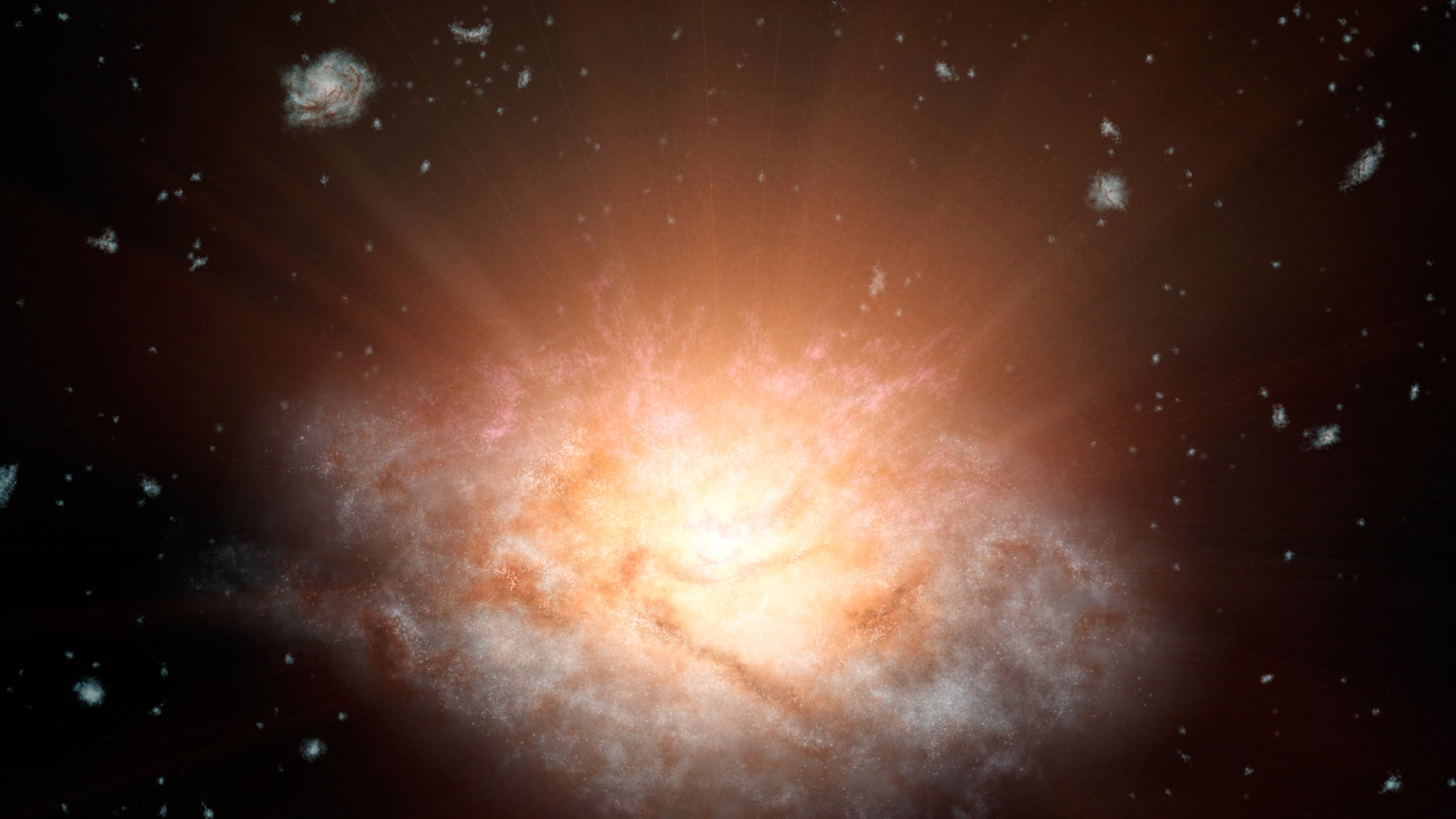
Ultra-luminous infrared galaxies (ULIRGs) are some of the most intriguing objects in the universe. These galaxies shine incredibly bright in the infrared spectrum, often outshining entire galaxies like the Milky Way. What makes ULIRGs so fascinating? They are usually the result of galaxy mergers, where two or more galaxies collide and combine. This cosmic collision triggers intense star formation and fuels supermassive black holes at their centers. The dust and gas from these events absorb visible light and re-emit it as infrared radiation, making ULIRGs glow brightly in the infrared. Studying these galaxies helps astronomers understand galaxy evolution, star formation, and the behavior of black holes. Dive into these 28 facts to learn more about these cosmic powerhouses!
What is an Ultra-luminous Infrared Galaxy?
Ultra-luminous infrared galaxies (ULIRGs) are some of the brightest objects in the universe. They emit more energy in the infrared spectrum than all the stars in the Milky Way combined. These galaxies are fascinating due to their extreme luminosity and unique characteristics.
- ULIRGs emit more than 100 billion times the luminosity of the Sun.
- They are often the result of galaxy mergers, where two or more galaxies collide and combine.
- The intense infrared radiation is primarily due to dust heated by star formation and active galactic nuclei (AGN).
- ULIRGs are usually found in the distant universe, billions of light-years away from Earth.
How Are ULIRGs Detected?
Detecting ULIRGs requires specialized equipment because their light is mostly in the infrared spectrum, which is invisible to the naked eye.
- Infrared telescopes like the Spitzer Space Telescope and the Herschel Space Observatory are crucial for detecting ULIRGs.
- Ground-based observatories equipped with infrared detectors also play a significant role in their discovery.
- The James Webb Space Telescope, launched in 2021, is expected to provide even more detailed observations of these galaxies.
The Role of Dust in ULIRGs
Dust plays a significant role in the characteristics of ULIRGs. It absorbs visible light and re-emits it in the infrared spectrum.
- The dust in ULIRGs is often heated to temperatures between 30 and 100 Kelvin.
- This dust is primarily composed of silicates and carbonaceous materials.
- The presence of dust can obscure the central regions of these galaxies, making it challenging to study their cores.
Star Formation in ULIRGs
Star formation rates in ULIRGs are incredibly high, often leading to the creation of massive stars.
- ULIRGs can produce up to 1,000 new stars per year.
- The intense star formation is often triggered by the gravitational interactions during galaxy mergers.
- These new stars contribute to the heating of the surrounding dust, enhancing the infrared emission.
Active Galactic Nuclei (AGN) in ULIRGs
Many ULIRGs host active galactic nuclei, which are supermassive black holes at their centers.
- AGNs contribute significantly to the luminosity of ULIRGs.
- The energy from AGNs can outshine the combined light of all the stars in the galaxy.
- AGNs can also drive powerful jets and winds, impacting the surrounding interstellar medium.
The Evolution of ULIRGs
Understanding ULIRGs helps astronomers learn about the evolution of galaxies and the universe.
- ULIRGs are thought to be a transitional phase in the evolution of galaxies.
- They may eventually evolve into elliptical galaxies after the merger process is complete.
- Studying ULIRGs provides insights into the early stages of galaxy formation and evolution.
The Importance of ULIRGs in Cosmology
ULIRGs are essential for understanding the broader context of the universe.
- They serve as laboratories for studying extreme physical processes.
- ULIRGs help astronomers understand the role of dust and gas in galaxy evolution.
- They provide clues about the conditions in the early universe, shortly after the Big Bang.
Challenges in Studying ULIRGs
Despite their brightness, ULIRGs present several challenges for astronomers.
- The vast distances to these galaxies make detailed observations difficult.
- The dense dust can obscure key features, complicating the study of their internal structures.
- Differentiating between the contributions of star formation and AGNs to the overall luminosity is challenging.
Interesting Facts About Specific ULIRGs
Some ULIRGs have unique and intriguing characteristics that set them apart.
- Arp 220 is one of the closest ULIRGs to Earth, located about 250 million light-years away.
- The galaxy IRAS 09104+4109 contains one of the most luminous AGNs known.
- The ULIRG known as Mrk 231 is the nearest quasar, a type of extremely luminous AGN, to Earth.
The Final Frontier of Ultra-luminous Infrared Galaxies
Ultra-luminous infrared galaxies (ULIRGs) are cosmic powerhouses. These galaxies, often hidden behind thick clouds of dust, emit more energy in infrared than all other wavelengths combined. Their intense luminosity comes from star formation and active galactic nuclei. ULIRGs are usually the result of galaxy mergers, leading to bursts of star creation and black hole activity.
Understanding ULIRGs helps astronomers learn about galaxy evolution and the universe's history. They offer clues about how galaxies grow and interact. Despite their distance, studying them reveals much about the cosmos.
So, next time you gaze at the night sky, remember those hidden giants. They might not be visible to the naked eye, but their impact on our understanding of the universe is immense. Keep exploring, keep wondering, and let the mysteries of ULIRGs inspire you.
Was this page helpful?
Our commitment to delivering trustworthy and engaging content is at the heart of what we do. Each fact on our site is contributed by real users like you, bringing a wealth of diverse insights and information. To ensure the highest standards of accuracy and reliability, our dedicated editors meticulously review each submission. This process guarantees that the facts we share are not only fascinating but also credible. Trust in our commitment to quality and authenticity as you explore and learn with us.
